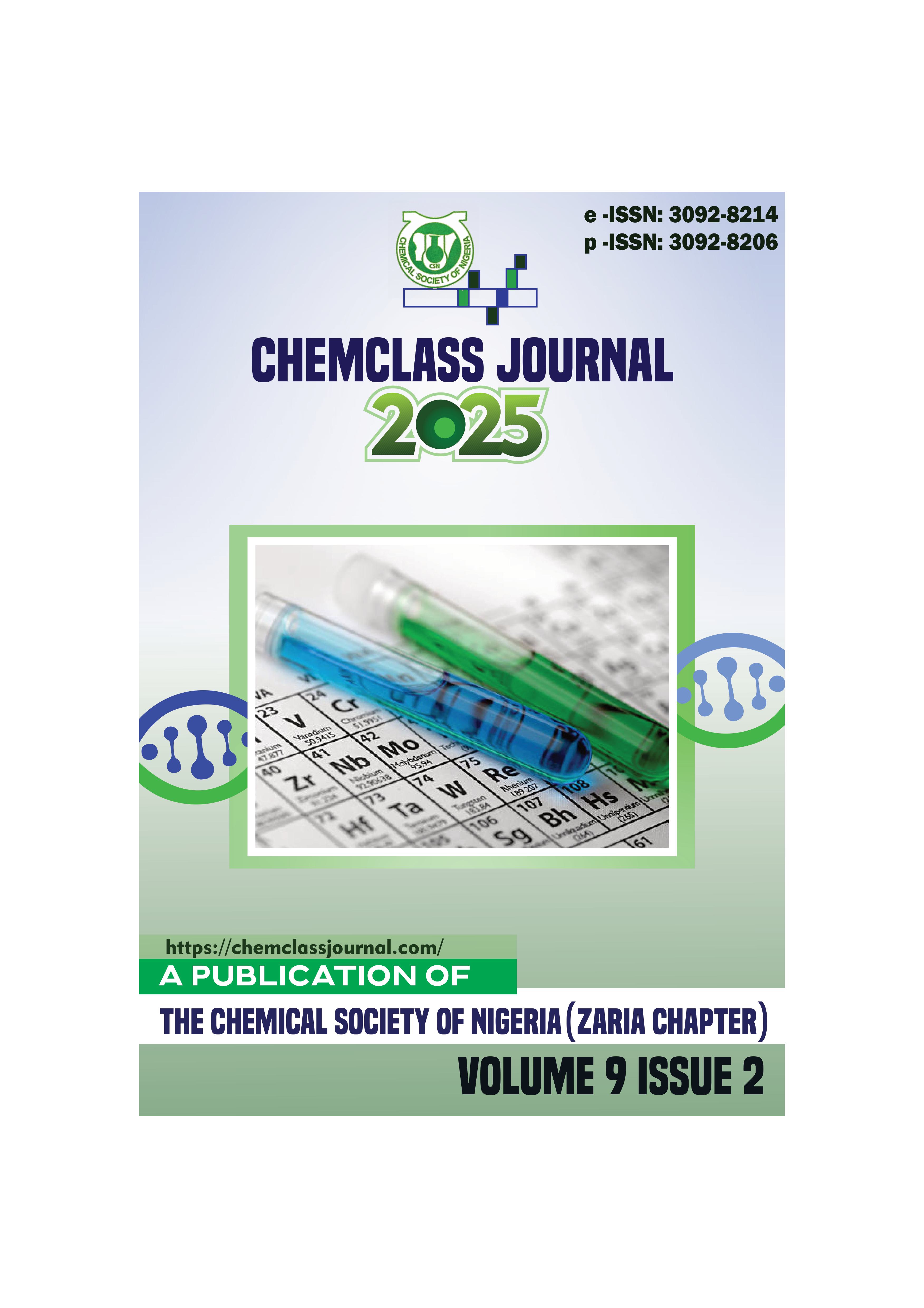Impact of Oil spills on Drinking Water, Surface Water and Soil Quality in K-Dere and Kpor Communities, Ogoni, Nigeria
DOI:
https://doi.org/10.33003/chemclas-2025-0902/175Keywords:
Borehole water , groundwater , hydrocarbons , heavy metals , Surface water, PhysiochemicalAbstract
In order to bridge the gap in the scientific data on the potential exposure risk to hydrocarbon contaminated
drinking, surface water, and soils, this study was conducted to evaluate the extent of pollution due to oil
spills in two communities in Ogoni, Nigeria. Standard analytical methods were used in the measurements
of physicochemical parameters of water (APHA), hydrocarbons (TPH: EPA 8015, PAHs: EPA 8270,
BTEX: EPA 8260) and heavy metals concentrations (ASTM) in water and soil samples were employed for
the study. Alteration of groundwater were indicated by a low mean pH of 6.4, objectionable odour, high
turbidity in the range of 210 – 250 NTU and presence of heavy metals with mean concentrations (0.25 mg/L
Cr, 0.08 mg/L As, 0.06 mg/L Pb and 0.01 mg/L Hg) exceeding NIS/WHO regulations. TPH (mg/L) were
767 (BHW1) < 1210 (BHW2) < 2430 (BHW3) and > 1030 (SW) in water while TPH (mg/kg) were 6541
(BHW1)> 6186 (BHW2) > 5127(BHW3) and NM (SW). The groundwater, surface water and soil samples
showed high level of contaminations by organic and inorganic compounds. The results from laboratory
analysis, exceeded benchmarks. Therefore, urgent, case-specific, effective intervention policies and
practices are strongly recommended





 ChemClass Journal
ChemClass Journal
